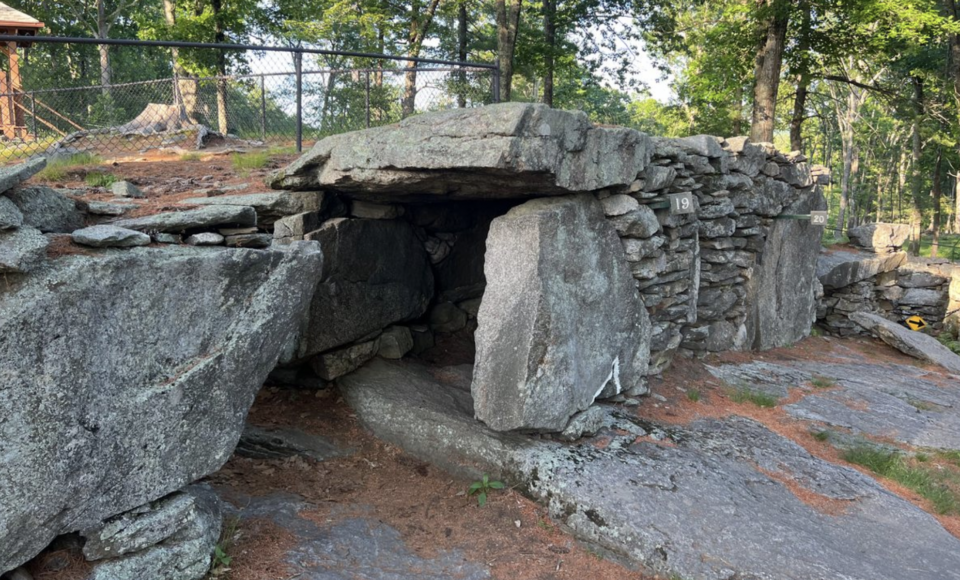America’s Stonehenge, often referred to as “Mystery Hill,” is a site shrouded in uncertainty and controversy. Its origins remain a subject of debate and speculation, with various theories proposed over the years. Some claim it to be a 4,000-year-old megalithic astronomical complex created by a mysterious Native American culture, while others suggest it may have been the remains of a monastery established by a group of Irish monks. Some even link it to ancient Middle Eastern peoples. However, the prevailing view among academic archaeologists is that it represents the misinterpreted work of 18th and 19th-century farmers. This complex history and the diversity of opinions have left America’s Stonehenge in a perpetual state of archaeological puzzlement.
In essence, America’s Stonehenge is quite dissimilar to the iconic Stonehenge in England, except for the common use of stone as a building material. It encompasses small stone walls, peculiar stone arrangements, underground chambers, and a one-acre granite outcropping adorned with rock structures and grooves, possibly serving as drainage ditches. The site’s history remained unremarkable for most of its existence, with it being attributed to colonial settlers or Native Americans. However, in 1937, when William Goodwin, an antiquarian and insurance executive, acquired the site, a new narrative emerged.
Goodwin, driven by a quest to find evidence of Vinland or the Viking settlement in North America, became convinced that America’s Stonehenge was crafted by “Culdees,” Irish monks who had supposedly arrived in New Hampshire before Columbus. This theory, despite lacking substantial evidence, opened the door to various other interpretations of the site’s origins. The Stone family took ownership of the site in 1956, renaming it “The American Stonehenge” and offering tours and merchandise. Barry Fell, a marine biologist and amateur historian, added to the intrigue with his book “America B.C.” in 1976, suggesting that the site contained ancient Ogham, Phoenician, and Iberian scripts.
Nonetheless, amid these speculations, some intriguing elements at America’s Stonehenge have been acknowledged by reputable historians and archaeologists. Some stones at the site were quarried using primitive techniques, and the alignment of certain stones might be consistent with ancient astronomy. Radiocarbon dating has indicated human habitation in the area dating back to 2000 B.C.
While it is plausible that the site is a combination of Native American occupation, colonial activities, and amateur archaeologists’ wishful thinking or even hoaxes, the full truth remains elusive. What is certain is that the enigmatic nature of America’s Stonehenge will continue to captivate and inspire investigations, regardless of the skepticism of many archaeologists.

